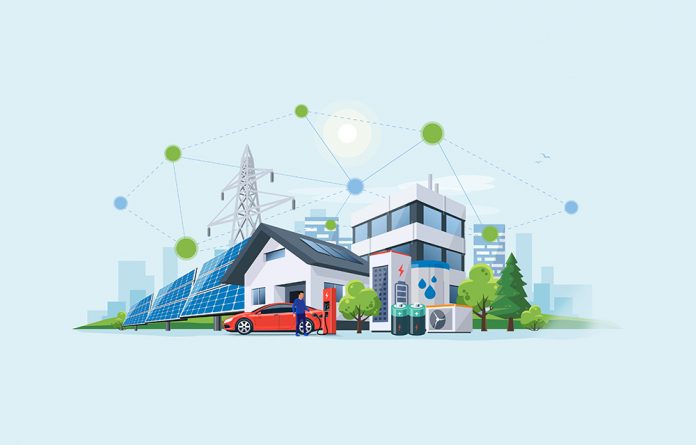The UK government plans to cut emissions in 30 million buildings with its net zero strategy. Installing low carbon heat pumps to replace gas boilers and grants for electric vehicles are among some of the suggested tactics. Yet one important piece of the puzzle was missing from the raft of proposals – smart technology, in particular smart buildings. Jamie Cameron, Director of Digital Solutions at Johnson Controls UK&I, investigates.
Forty per cent of carbon is generated by our buildings, meaning that innovation in technology holds unique potential to drive down carbon dependence in this area. Thankfully, these technologies already exist, but we need to implement them in the right ways to get the most out of our buildings.
Where are we now?
Businesses across the UK are implementing smart solutions, just not at the pace required to see real change. Our recent research shows that only 34% of UK buildings are fitted with smart technology yet, when asked how important this technology is to performing their role, almost every respondent (99%) saw its value. When looking at these figures, the disconnect between awareness and action becomes clear.
When the pandemic disrupted the world of work, the focus for smart tech turned to health and safety. Businesses across the country implemented point solutions such as thermal cameras, contactless access controls, air purification systems and remote management into buildings to make it safe for employees to return to work. At the time, it was what we needed for our buildings.
But as sustainability and efficiency conversations continue to take precedence; a new era is on the horizon. It may seem like a daunting goal, but in fact it isn’t. Businesses can meet net zero targets while remaining on track with employee safety and comfort. But this lies in holistically bringing smart solutions together and ceasing to rely on siloed approaches.
Tomorrow’s smart building
If we get the technology right in our buildings now, we can transform the way we use them in the years to come. But first we need to move away from solutions and concentrate on our desired outcomes. This means changing the way we operate: our buildings need to deliver ROIs and achieve net zero carbon and energy efficiency targets, all while ensuring occupant comfort and safety throughout. The smart building of the future will need to tick all these boxes.
The challenge is that we need to manage the combination of operating tech, bringing together multiple data sources and different systems to drive value. Digital twins, for example, can turn the physical world into computable objects. Computable objects provide a consistent way for software to manage and represent entities from the physical world. These can then be used to predict the future state of physical objects, and to simulate or test future processes. If a product is having any issues, or is nearing the end of its lifecycle, a digital twin can notify and send out an engineer with the right part to fix it first time. The building can remain energy-efficient while bringing down costs to the business.
The future is automated
With new technologies such as digital twins, IoT, ML, AI and Automation, smart buildings can operate without much human interference at all. Building management systems can maintain and optimise buildings on their own, and only need human intervention when they are notified.
Businesses now have the opportunity to create an environment that’s sustainable, efficient, and healthy. Covid-19 has woken us up to the issues of our health, and the climate crisis can no longer be ignored. If we create truly smart buildings, we’ll be in good stead to achieve the goals of shareholders, employees, customers, and regulators for the future.



